“If I cast my eyes before me, what an infinite space, in which I do not exist, and if I look behind me, what a terrible procession of years, in which I do not exist, and how little space I occupy in this vast abyss of time.” Blaise Pascal, “Pensées ”
“All beings are buddhas … there is no being that is not enlightened, if it but knows its true nature.” Hevajra Tantra
“I have been waiting beyond the years
Now over the skyline I see you’re travelling
Brothers from all time gathering here
Come let us build the ship of the future
In an ancient pattern that journeys far
Come let us set sail for the ‘always’ island
Through seas of leaving to the summer stars
Seasons they change but with gaze unchanging
O deep eyed sisters is it you I see?
Seeds of beauty ye bear within you
Of unborn children glad and free
Within your fingers the fates are spinning
The sacred binding of the yellow grain
Scattered we were when the long night was breaking
But in the bright morning converse again.”
The Incredible Stringband, “The Circle Is Unbroken”
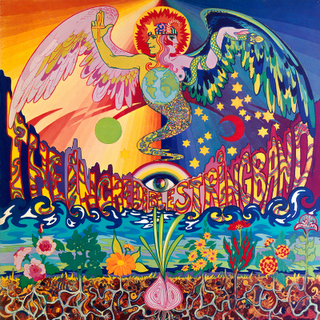
The method to enlightenment according to Crowley, who has boiled down the Eastern teachings to its essence after having travelled to India and other places in the Orient, is very simple: Sit down, shut up, stop thinking, and Get Out! It’s simple, but not easy. Even the Tantric scholar, Hugh B. Urban, admits that Crowley had a fairly well-grounded understanding of Yoga, as his book, Eight Lectures on Yoga (a book still worth reading), proves. Let’s look closer to what Crowley meant by his formula.
Sit down: This refers to Asana, a term in Yogic literature for posture. It needs to be solid, but also comfortable. After all, you are supposed to sit in this posture for about half an hour. (You should be able to sit like this for hours. One hour is the most I reached once. However, don’t be too masochistic.)
Shut up: This one is hard. At least for people like me. I like to talk a lot. Most westerners are talking or are listening to talking people most of the time. (Here talking includes singing, making sounds, listening to the radio, watching TV etc. Even reading is talking, as whilst you read those words an internal voice is speaking to you. Isn’t it?) So, this one is really hard. But, after we have sat down we have to invite silence into our heads.
Stop Thinking: This is impossible, you say? I hear you, my friend. I know, it’s next to impossible. But hey, haven’t we began our quest for magic, myth and mystery because we strive for that which is miraculous and fills our hearts with Joy and Awe? Isn’t magic the science of the extremes and the impossible? The violation of probabilities? Haven’t they told you sigil magic doesn’t work, it cannot happen, but IT DID!!! In the same way we must push our boundaries of Achievable Reality with every breath we take. We learn slowly. Magic cannot be learned at a retreat or weekend workshop. We learn by applying our insights in daily life. This is an endless process. On this way we must accept our imperfection, stop worrying, stop wishing, yes, stop thinking! We must learn to watch our thought patterns and thus become aware of the origination of thoughts. We must not strive for anything, we must not force our minds to do anything, but just watch. „Breath in, breath out,… thoughts… breath in, breath out …“ asf. Finally, we will establish mental silence, or to be more accurate, it establishes itself. And even a few seconds of this mental silence are like a short glimpse at eternity, a foretaste of real inner peace.
Get out: This leads to profound stages of gnosis. It doesn’t make really sense to talk about it, because one gets there easier when one “shuts up” and “opens up” to silence. The idea of “getting out” ultimately points to the experience of illumination. But what is illumination? Well, the short answer: I don’t know. But we can look closer to what has been said how magic and illuminated states of consciousness are linked up.
Beside Yoga another fundament of Crowley’s teachings is the modern version of Qabalah / Kabbalah. Though I respect Qabalah as a mystical current in Judaism I think that too many ‘occult masters’ turned qabalah into a rather intellectual exercise without any real spiritual value. The study of correspondences is an ancient art that belongs to the great Arts of Imagination, that was practised back in the days when Imagination was not just seen as unreal and put on a level with fantasy. One of the most influential humanist philosophers of the early Italian Renaissance and a reviver of Neoplatonism, Marsilio Ficino (1433-1499), rediscovered this ancient art during a time when Florence was the place to hang out for hip artists and ‘avant-garde’ intellectuals, an important centre of the ending Mediæval Ages, where cultural innovations and developments took place that led to an end of the dominance of the Church. New ideas began to spread that resulted in intellectual transformations of a grand scale. The Renaissance is viewed today as a bridge between the Middle Ages and the Modern era. The Renaissance saw revolutions in many intellectual pursuits, as well as social and political upheaval, but what I find most fascinating is that it was inspired by the past, the classical age: Ancient Greece and Ancient Rome. So it doesn’t come with a surprise that this was also a revival of Magic. Humanists asserted “the genius of man… the unique and extraordinary ability of the human mind.” In that special intellectual environment Ficino taught what he considered to be ‘Natural Magic’, and so laid the foundation for what is called ‘Ceremonial Magic’ now, known to us through such magical authors like McGregor Mathers, Dion Fortune, Aleister Crowley and Israel Regardie. This form of magic is still practiced in their occult orders all over the world today.
“Ficino’s magic was grafted on to an existing tradition of medieval magic, which in turn had derived from Arabic sources such as the notorious manual of spirit evocation called Picatrix. The fundamental idea was the doctrine of correspondences, which teaches that everything in the universe corresponds to other things on higher or lower levels of being.” (Godwin 2007: The Golden Thread – The Ageless Wisdom of the Western Mystery Traditions, p. 99)
This idea is really old. It seems it never disappeared completely. With the rise of modern science in the 17th century Kepler (1571 – 1630) and Newton (1643 – 1727), both deeply into the occult, have cut through the band of nature and psyche, man and the world, the subjective and the objective universe, that has existed since the rise of human consciousness, known to the ancients as the world-soul, anima mundi. (Actually both, Kepler and Newton, saw the harmonious order of the divine creation in the physical laws they discovered, a kind of clockwork universe (instar horologii) and ‘world machine’ (machina mundi). However their physical laws made the idea of a divinely ensouled universe (instar divini animali) obsolete.) For the ancients the world-soul was the vinculum amoris, the band of love, that connected the inner world with the outer world, man and nature. Three centuries later we would come to conclusions that allowed us again to re-imagine this sacred bond between man and nature. We needed quantum physics and a swiss prophet to re-member again. This prophet was, yes you guessed it, Carl-Gustav Jung. His ideas of the archetypes and a collective unconscious made magic possible again. He wrote in 1916, after a spiritual crisis:
„Man is a gateway, through which one enters from the outer world of the gods, demons, souls, into the inner world, from the greater world into the smaller world.” (Jung [1916]: Sermones ad Mortuos, in: Jung 1963: Memories, Dreams, Reflections, p. 380)
That means that we can enter deeper, hidden realities by finding pathways through which we can communicate with our unconscious, which Jan Fries calls the “Deep Mind.” When we open up to that possibility we begin to interact magically with our environment, and a sacred psychogeography is thus created: “It is through the human unconscious that one passes from the ‘greater world’ to the ‘smaller world’ of the interior universe. The God of the ‘exterior’ universe is the sun; and the interior world is, accordingly, illuminated by the sun of man’s personal inner divinity.”(Hanegraaff 1996: New Age Religion and Western Culture, p. 503)
Hence the archetypes of the collective unconscious are simultaneously part of the macrocosmos (the outer world) and the microcosmos (the inner world), which leads to the fascinating, magical conclusion that the world of the psyche and the world of “outer” reality are ultimately only reflections of a higher reality, the unus mundus, the “One world,” or to put it differently: the world and the psyche are each mirroring the one reality. This means that Jung assumed a monistic meta-level behind or beyond the subjective (psychical) and objective (physical) reality – the unus mundus, a term which refers to the concept of an underlying unified reality from which everything emerges and returns to.
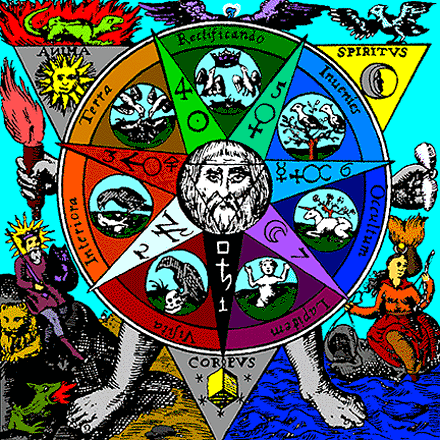
To me this conception is the fundament of magick. Being a modern learner on the magical path I always imagined that connection more in scientific terms. My thoughts were running along those lines: If there was a Big Bang (even if Carroll says this idea is nonsense) everything in the physical universe has the same origin. And when we then look to quantum physics we can see that it proves that two particles that have the same source behave somehow as if they were still connected, even though they are seperated by a huge distance. This means that if one of the two particles gets affected by certain events, the other is affected in the same way though it’s physically somewhere else. One must be blind, if one doesn’t see a connection between these new discoveries and the old conceptions of correspondences, even if we cannot conclude from this that science is now accomodating some of the conclusions magicians have reached millenia ago. Or can we? Wolfgang Ernst Pauli (1900 – 1958), an Austrian theoretical physicist and one of the pioneers of quantum physics, who received the Nobel Prize in Physics, was examing the synchronicity principle with Jung, and he argued that there must be a psychophysical unified reality that connects the psyche and the world. He thought of it as an invisible, potentially existing reality that could only be unlocked by studying its effects on the visible world. He was looking for a “new language” that could describe that reality. I think he found it in Jung’s theories. We have found it in magical systems and terminology. It’s no mere accident that Jung became so popular in magical circles. There is a sublime truth in his psychology. It points at an underlying unified reality, the unus mundus, a term Jung borrowed from the alchemist Gerardus Dorneus (1530 – 1584).
It’s also not a coincidence that when scientists (Metzner, Leary, Grof etc.) took LSD, Mescalin, asf. they entered these wyrd inner landscapes, where the ‘laws’ of the unus mundus reign. Certain drugs can lead you to the experiences of unitary consciousness. When these psychedlic drugs reveal that underlying unified reality, it happens sometimes that when an unprepared person takes LSD – has a ‘wrong set’, as Leary said (a wrong attitude, f.e. feels bad or is depressive or anxious) or is in an unappropriate environment (like a disco, a ‘wrong setting’) – that such a person gets a ‘bad trip’, which mainly means paranoia: everything in the universe, strangely connected in weird ways, is a conspiracy against you. There is, however, a way of perception that inverts that process and it’s an effective method to communicate with the Universe, and experience a “communion”. For that purpose you can conceptualise the Universe, like the Tantrics did, as the body of the Goddess – known to me as Eternity, or Nuit. That’s a form of gnosis that Satanists and Setians will never know: it’s called pronoia. I came across this term in Humphries’ and Vayne’s fascinating Grimoire Now That’s What I Call Chaos Magick. ‘Pronoia’ is a state of consciousness that is intimately connected to the Holy Guardian Angel concept. Here the seeker experiences that the Universe is actually alive and that it cares for you and it tries to help you in any way possible to get closer to your Self that, in essence, – on a profound, meaningful and transcendent level invisible to the eye – is One with the Universe. The realization of this Oneness implies a particular attitude on the part of the adept toward cosmos, like in Ficino’s Natural Magic or in Hindu-Tantra, whereby s/he feels integrated within an all-embracing system of micro-macrocosmic correlations. The Universe here is not just a thing ‘out there’, but Her – She, the Mysterious Universe being the Goddess Herself (for mystical monotheists it’s mostly Him, God the Father or Christ). Every attempt to conceptualize Her / Him / It leads to an anthropomorphisation of Her: the Goddess in Her various forms: Nuit, Freyja, Kali, Virgin Mary, the Holy Whore.
“All our ancient ways are wrought with love of Her, lifting up Her skirts and showing off Her irresistible flesh, our flesh, all flesh… For only a real fool, the worst drudge, would ever refuse Her come-on. Even those with little wisdom know in their hearts that She has but one aim: to bring you ecstasy, to destroy the illusion of seperateness…” (Dave Lee 2006 [1997]: Choatopia!, p. 203)
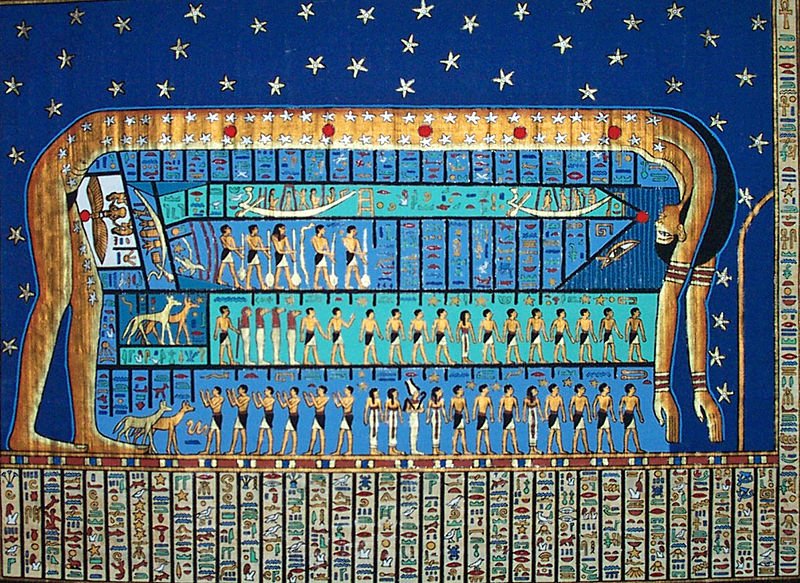
I don’t know why, but I feel very attracted to the perception of the Goddess (on one level of reference) as Nuit. Probably it’s because it’s the first Goddess I encountered on my Path when I discovered The Book of the Law. Nuit has been described by Crowley in various ways. First of all he equated this Egyptian Goddess of the Night Sky with the Qabalistic concept of Ain Soph Aur, the Limitless Light: the Godhead, prior to Its Self-Manifestation, before It emanates into manifestation on verious levels of existence and thus creates the world(s). This idea probably derived from Ibn Gabirol (1021 – 1058), an Andalucian Hebrew poet and Jewish philosopher, who coined the term, “the Endless One” (she-en lo tiklah). Ain Soph may be translated as “no end,” “unending,” “there is no end,” or “the Infinite.” Hence a term like Ain Soph Aur (אין סוף אוֹר) means “Endless Light.” Ain Soph is the divine origin of all created existence, which emanates out of infinite no-thing-ness (Ain). Another way to approach the Mystery of Nuit (at least in Crowley’s sense, I’m not concerned with Old Egyptian religious conceptions here) is to understand it as a certain state of being that the Buddhists called Nibbāna in Pali, known as Nirvāna (Sanskrit: निर्वाण) to most. It is a state of being free from suffering (dukkha). In Hindu philosophy, it is the union with the Supreme Being (=God) through Moksha (Sanskrit: मोक्ष) or Mukti (Sanskrit: मुक्ति), which literally means “release” in the sense of “letting go.” The concept of Nirvāna is often associated in Western minds with the false impression of a nihilistic, life-denying stance, because it means “blowing out.” However, in truth things are more complicated. It might have been a world-denying concept, but basically it refers to the blowing out of the fires of greed, hatred, and delusion. Over centuries this concept was transformed in Tantric Buddhism to the idea that Nirvana is a purified, non-dualistic “superior mind,” unclouded by any dualistic perceptions. In Western occultism we now have the confused impression that the ideas of “Self” and “No Self” are somehow contrary, and certain so-called “LHP” adepts assume that the RHP traditions lead to “self-annihilation” and that the LHP traditions lead to a “preservation of the self.” Don Webb, an initiate of the Temple of Set, writes:
“Crowley believed that when one left the Adept Grade, one could either give up one’s ego or become a Babe of the Abyss, being at one with Nuit OR one could shut himself away from the universe and become a Black Brother, a follower of the Left Hand Path. These unfortunate SOBs were eventually destroyed by the universal tides acting upon them, much like stones being worn down by sea waves. We in the Left Hand Path (LHP) see this matter differently. If we didn’t we would scarcely have an interest in the First Beast [the “Second Beast” being Aquino for Setians, my remark]. Crowley believed that the Master of the Temple obtained a true Union with the objective universe and by so doing could interpret any event in that universe as a communication from its meaningful and purposeful side. Ultimately one would realize the unity of spirit and matter, and the folly of believing one’s thoughts to be seperate from the Cosmos. Crowley saw himself as a teacher of the Right Hand Path.” (Webb 2005: Aleister Crowley – The Fire and the Force. p. 32)
This is just a terribly confused position (resulting from Descartes’ cogito ergo sum hypothesis, and Mr. Kepler’s and Newton’s destruction of the vinculum amoris, which I have mentioned above) that has no relation to any deeper or ancient Tradition, but is more or less a modern, neo-satanic myth that somehow developed between the antagonistic positions of Mme Blavatsky’s and LaVey’s (and his pupils’) occult ideas, who both got it all wrong, because the RHP’s and LHP’s goal is the same: the Unio Mystica, the sacred marriage of homo and deus. The aim is shared by both paths. What is different are their methodologies. The same confusion arises when Hinduistic and Buddhistic concepts are compared. Whilst Advaita Vedanta (Advaita means literally “non-duality”), a monistic school of Hindu philosophy, promotes the idea that the Self (Atman) and the Whole / “God” (Brahman) are identical, and thus presupposes a True Self, Buddhism describes exactly the same phenomenon, but calls this discovery No Self (Anātman), and thus presupposes an Emptiness (Suñyatā). The truth is that both, True Self and Emptiness, are descriptions of the same thing, but we less insightful seekers with not enough meditative experience get lost in concepts and conceptions. And, as so often, the truth gets lost in translation, too. We must keep in mind that these things are very very hard to grasp, and it’s even harder to put those experiences into words.
But to come back to Nuit: She, as a Goddess of Eternity, embodies these concepts of Ain Soph Aur and Nirvana in a beautiful and unique way, beyond words and reason. The HGA, then, is that kind of entity that tries to re-connect you with Her. Here the idea of Angels as intermediary beings, as the „messengers of God“, the Pleroma or Nous, must come from, I assume. For that concept to be of any use to a sane modern individual today, we need a very clear and grounded understanding of what the nature of that Angel is. It’s been stated by Crowley several times that he incorporated the notion of a Holy Guardian Angel into his system of magick, because he found it so ‘ridiculous’ that, he assumed, noone would ever confuse it with Angels in a literal sense, but look for the higher and deeper meaning of the necessity of that experience.
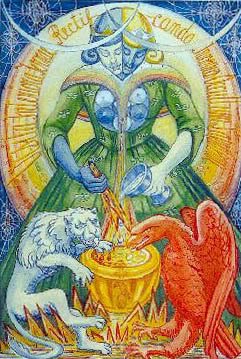
“The Holy Guardian Angel is everything you are not. It is other. It cannot be described, for if it could it would be part of you. The search for it is therefore not the search for a specified goal, but a great search for other. It is the search for some kind of metaphysical experience and unity, bliss and joy. As you grow and your knowledge increases ; so the Holy Guardian Angel changes, leading you further along the path into the unknown. The magician is aiming to establish a set of ideas and images that correspond with the nature of his genius, and at the same time receive inspiration from that source. It is your purpose in existing. It is what you are here for, it is why you chose to incarnate at this time, in this place. Its goals become your goals, it cares about what you do and wants you to achieve them. To ally your desires with its desires is to enter into a divine communication … .” (Humphries & Vayne 2004: Now That’s What I Call Chaos Magick, p. 141)
This idea has totally seeped into my Life a long time ago and it is connected to my deep drive to re-connect with the Divine, a hidden, deeper reality that lurks behind the outer forms of the visible, measurable world. It was exactly this mystical fire that burned in my heart, when I entered the magical path. It was just later that I came to know that such concepts as sigils, magical power, and in some contexts the exaltation of the ego, are part of what is called magick. It’s the mystic’s passion that pushes me forward on my magickal journey that I identify as the main purpose of my Life. But Life and Magick are the same, “and both can only be about a spiritual journey, a path towards a Re-Union with a Supreme Creator, with God, with the Divine.” (Genesis P-Orridge) Even if I do consider the idea of a “Creator” as an utterly useless concept that is unnecessary in my understanding of the Divine, and even if the concept of “God” sounds heavily Christian or monotheistic, it’s always been clear for me why I have entered the magical arena: to re-unite with the source of All. Nothing else is serious. And that source of all is No-Thing or Nuit , “the Boundless Light,” as modern qabalists put it. In this sense I consider the modern, neo-satanic conceptions of the LHP with their notion “Preserve the self at all costs! Resist the evil mystics!“ rather misleadinging. I do not believe that this mystical process known as Coincidentia oppositorum (“coincidence of opposites”) leads to “self-annihilation” as Aquino and other promoters of that modern form of the “LHP” formulated it. The principle of the “uniting of opposites” is an ancient one and constitutes a fundamental element of what Aldous Huxley baptized Perennial Philosophy. The experience of the Coincidentia oppositorum was used in describing an alchemical process, to be exact, its fourth stage, rubedo (“reddening”): the unification of man with God. In Thelemic mysticism this is the unification of the limited (individual consciousness), or Hadit, with the unlimited (cosmic consciousness), or Nuit , ”the Boundless Light.” In this regard the mystical experience can be seen as a revelation of the oneness of things previously believed to be different. Such insight into the unity of things is an experience of a transcendent reality, a meta-level, the unus mundus, as described above. This level of being (actually transcending being and non-being) shouldn’t be regarded as “foreign” to magic, but as its fundament – the origin and aim of all magic – that helps us to explore the metaphysics of our practice. The experience of the coincidence of opposites is known in Germanic spirituality, albeit in its Christianized version. It can be found in various descriptions of German mystics that constitutes a religious current known as German or Rhineland mysticism, which was a late medieval Christian mystical movement, that was especially prominent within the Dominican order and in Germany. Although its origins can be traced back to Hildegard von Bingen, it is mostly represented by Meister Eckhart, Johannes Tauler, Henry Suso, Rulman Merswin and Margaretha Ebner, and the Friends of God (“Gottesfreunde”). Actually this “golden thread” (Jocelyn Godwin) can be traced back to magico-mystical traditions all over the world. The idea occurs also in the traditions of Tantric Hinduism. These mystical features are shared by the esoteric teachings of many religions. They do not seem to be just bizarre or irrelevent products of the fantasies of certain religious enthusiasts, but rather the lived and embodied knowledge of each religion that is central to its thorough understanding.
“Just as previously our deficient understanding of Christianity has been corrected by considering mysticism and such figures as Meister Eckhart and Saint John of the Cross and our understanding of Judaism has been corrected by the study of the Kabbalah and such figures as Isaac Luria, so our understanding of Hinduism will be revised when Tantrism and its key historical figures are given appropriate scholarly attention. Issues and individuals that were once considered bizarre or irrelevant must now be considered essential; without them our understanding is not merely intellectually impoverished but historically negligent.” (Douglas Renfrew Brooks 1990: The Secret of the Three Cities: An Introduction to Hindu Sakta Tantrism, p. ix)
In the same way it is true that our understanding of Islam will be transformed, when Sufism is taken into account. These essential, dare I say, eternal truths, are also known in the various Tantric schools of Mahayana Buddhism, including Zen, and in Daoism. Already in my teenage years I was aware of the significance of the mystical experience on the magical path, even if in an overtly romantic and “psychedelicized” way. This might be the reason, why in the beginning I didn’t understand what the point of Chaos Magic (CM) is, with their emphasis on “results” and why LaVeyean Satanism made me only shake my head in disgust or shrug my shoulders in apathy. The “old” systems of Western Magic (the Golden Dawn-style approach developed in the 19th century), then again, seem to loose themselves in table of correspondences and intellectual exercises for climbing up “Jacob’s Ladder” towards abstract conceptions of the Divine. (Though I know an initiate of the G.’.D.’. who is the living proof that these approaches still work and are valid today.) This is why the Chaos approach popularised by Pete Carroll became necessary and why the chaotes developed such a rigorous, “technocratic” approach to magic, where results are of main interest, not mystical mumbo-jumbo and cosmic foo-foo (with which New Age became obsessed in an unhealthy way). Over the years / decades some chaos magicians became drawn towards mystical experiences, despite Carroll’s exclusion of mysticism in the CM Current. This can be explained rather easily from my point of view. It’s because magic and mysticism are connected in profound ways. They are two sides of the same coin. If you exclude one from the other you do so at your own peril. It seems that the accumulation of gnoses, of many altered states of consciousness, leads to a mystical longing in a magician.
“Repeated experience of higher states of consciousness eventually leads to some experience of the core paradox of individual being. The mind starts asking questions like: Why don’t I always feel this ecstatic? Why don’t we just get ecstatic when we finished our day’s work? What is the origin of individual consciousness? Why does the ego keep wittering on in its tedious internal monologues of past-oriented identity, and what can I do about it? How can I get to an unconditioned mind? The occasional extra bit of money, sex, personal power and healing no longer satisfy; everything is muddied by the taste of the ego. Transformation and ecstasy become urgent.” (Dave Lee 2006 [1997]: Chaotopia!, p. 151)
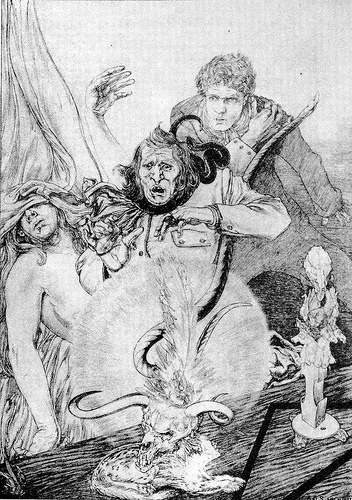 The Self in Ecstasy, by Austin Osman Spare
The Self in Ecstasy, by Austin Osman Spare
The Genius of the chaos-mystical stance is to me that all descriptions of these higher states of consciousness (all these Nirvanas, Ain Soph Aurs, Nuits, Pleromas, Shunyatas, Gods, Holy Ghosts asf.) are regarded as descriptions or “maps” invented or developed by other psychonauts, who made their journeys to the hidden chambers of the Soul before us (mystics, tantrics, yogis, senseis, magi, gurus, enlightened teachers asf.). And their “maps” are not the “territory” itself. A chaos mystic does not accept any theories about enlightenment, immortality, eternal bliss and “Big Daddy up there.” These are all theories. There are then two types of seekers if you like: those “working from a top-down / theoretical perspective (presumably because the reports they read resonate with some deep part of their own experience) and those who need to proceed from bottom up, proving the reality of the stages of higher consciousness to themselves at each stage, without assuming a pre-determined endpoint of enlightenment.“ (Dave Lee) To me this is the true difference between a LHP and a RHP initiate, if we still consider these categories to be useful. Well, I do. To me the LHP magician really is the seeker who goes out and looks for himself what is behind the curtain and afterwards develops his own psychocosm, psychogeography and magico-mystical system. In this sense I still agree with the definition of the LHP I have given in my first post one and a half year ago, namely that the best definition of the LHP to me is that one does not follow anyone or any fixed routes to enlightenment, but rather that one follows one’s own path. The Chaotick Path makes more sense. Amen.





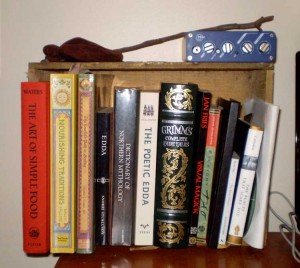 Next to my computer on my desk I keep a small selection of essential texts for my Chaos Heathen proclivities. These are the books that I find myself referring to in casual conversation about myth or history or nutrition or healing. I’m sure everyone has their favourite reference texts (and I’d love to hear what they are): here are mine.
Next to my computer on my desk I keep a small selection of essential texts for my Chaos Heathen proclivities. These are the books that I find myself referring to in casual conversation about myth or history or nutrition or healing. I’m sure everyone has their favourite reference texts (and I’d love to hear what they are): here are mine.




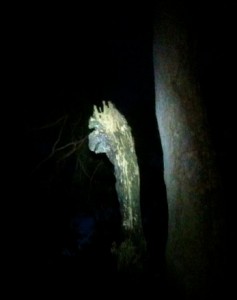 (All photos in this article by Donovan)
(All photos in this article by Donovan)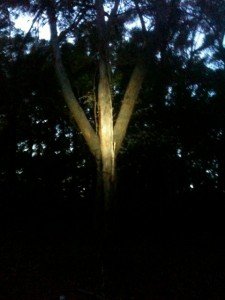 All too soon the first hint of daylight is creeping up as you come to the sacred place. It is marked by two trees – from the correct angle, they form an Elhaz rune shape – concealing and revealing the site all at once. You plunge off the path, and soon stand on a vast flat boulder that perches on a cliff face. Below you – thick forest. Beyond – endless ocean, as far as you can see from north to south. The horizon is rimmed with morning cloud and the faintest hint of gold is beginning to spill over the edge of the world.
All too soon the first hint of daylight is creeping up as you come to the sacred place. It is marked by two trees – from the correct angle, they form an Elhaz rune shape – concealing and revealing the site all at once. You plunge off the path, and soon stand on a vast flat boulder that perches on a cliff face. Below you – thick forest. Beyond – endless ocean, as far as you can see from north to south. The horizon is rimmed with morning cloud and the faintest hint of gold is beginning to spill over the edge of the world.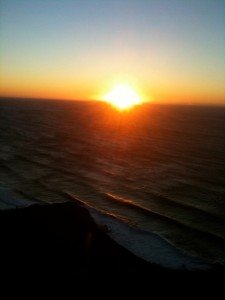 Then…gradually speech turns from casual laughter to serious laughter, as gods and good tidings are invoked. Sweet, sweet home-brewed mead is poured. Oaths and prayers are made good in the drafts that are downed. Spells spoken for yourselves and for others and for the very place itself. Loaded phrases swirl and coalesce: “bottoms up” becomes the seed of the day, a meme loaded with meaning ineluctable. When finally the tide of the magic is spent mead is poured to the ground, offered freely and with deep gratitude.
Then…gradually speech turns from casual laughter to serious laughter, as gods and good tidings are invoked. Sweet, sweet home-brewed mead is poured. Oaths and prayers are made good in the drafts that are downed. Spells spoken for yourselves and for others and for the very place itself. Loaded phrases swirl and coalesce: “bottoms up” becomes the seed of the day, a meme loaded with meaning ineluctable. When finally the tide of the magic is spent mead is poured to the ground, offered freely and with deep gratitude.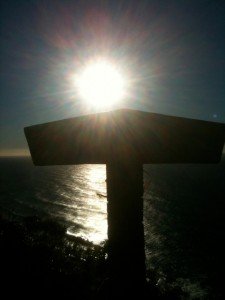 It doesn’t seem accidental that the early Heathens built no temples, but held their religious observances in groves and clearings and deep in the woods. In elder times people perhaps understood far more consciously the power and practical need of deep spiritual experiences, and perhaps their choices of location for making their offerings and prayers reflected this understanding.
It doesn’t seem accidental that the early Heathens built no temples, but held their religious observances in groves and clearings and deep in the woods. In elder times people perhaps understood far more consciously the power and practical need of deep spiritual experiences, and perhaps their choices of location for making their offerings and prayers reflected this understanding.